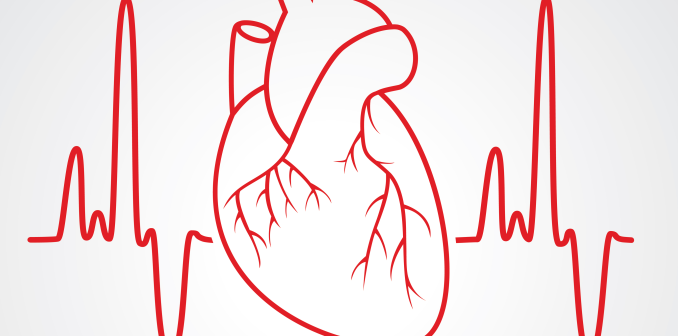
- A permanent recording of the electrical events during a cardiac cycle made on a graph paper in the form of waves is called electrocardiogram (ECG).
- The passage of an electrical current generated by the SA node through atria, AV node, ventricles etc. can be measured easily and accurately.
- Electrocardiograph is the instrument to measure such electrical activity and the recording thus obtained on a graph paper is called electrocardiogram (ECG or EKG).
- The electrical events include depolarization and repolarization of the auricles and ventricles bringing about their contraction and relaxation.
- The electrocardiograph has electrodes which are placed in various positions of the body (two arms, left leg and chest) after the application of a jelly like electrolyte on the leads (electrodes).
- The three standard leads for an ECG are connected in the following ways:
- Lead I to the right wrist and the left wrist
- Lead II to the right wrist and the left ankle
- Lead III to the left wrist and left ankle
- In addition, six electrodes are placed on the chest in standard positions numbered from V1-V6.
- These electrodes pick up the electric current produced by the heart and pass through the string galvanometer present in the electrocardiograph.

Electrical activities:
- A typical human electrocardiogram shows five waves or deflections which are conventionally called P, Q, R, S and T waves.
- The P, R and T waves are above the base line of ECG, and are known as positive waves.
- The Q and S waves which are below the base line are called negative waves.
- The part of the base line between any two deflections is called interval.
- P wave:
- The impulse (action potential) begins in SA node and spreads through the muscles of atria or auricles to the AV node.
- It causes the depolarization of the atria prior to their contraction.
- It ranges from 0.06 to 0.11 seconds.
- P-R segment (wave):
- Atrial depolarization and conduction through the AV node.
- It ranges from 0.06 to 0.10 seconds.
- P-R interval (onset of P wave to onset of QRS complex):
- It is the time between onset of atrial depolarization and contraction, and onset of ventricular depolarization and contraction.
- It ranges from 0.12 to 0.21 seconds.
- QRS complex (wave and interval):
- Depolarization of the ventricles
- Repolarization of atria is masked on ECG by ventricular depolarization
- It ranges from 0.03 to 0.10 seconds.

- S-T interval (wave; end of QRS complex to onset of T wave):
- It is the end of ventricular depolarization and the beginning of repolarization of ventricles.
- It ranges from 0.10 to 0.15 seconds.
- T wave:
- Repolarization of the ventricles
- The time range varies.
- S-T interval (end of QRS complex to end of T wave):
- It is the interval between completion of depolarization and end of repolarization.
- It ranges from 0.23 to 0.39 seconds.
- Q-T interval (onset of QRS complex to end of T wave):
- Ventricular depolarization along with ventricular repolarization.
- It ranges from 0.26 to 0.49 seconds.
Electrocardiogram as a diagnostic tool:
- Abnormality in the working of heart alters the wave pattern of ECG.
- A physician can find out the defect in the heart by examining the wave patterns and the time interval between them.
- A heightened P wave indicates an enlarged atrium.
- A higher than normal Q wave may indicate a heart attack (myocardial infarction).
- A heightened R wave usually indicates enlarged ventricles.
- Any damage to the myocardium, enlargement of the auricles and ventricles, abnormal heart rhythm etc. may cause the deviation of the sequence of excitation in the cardiac cycle which is referred to as cardiac arrhythmia.